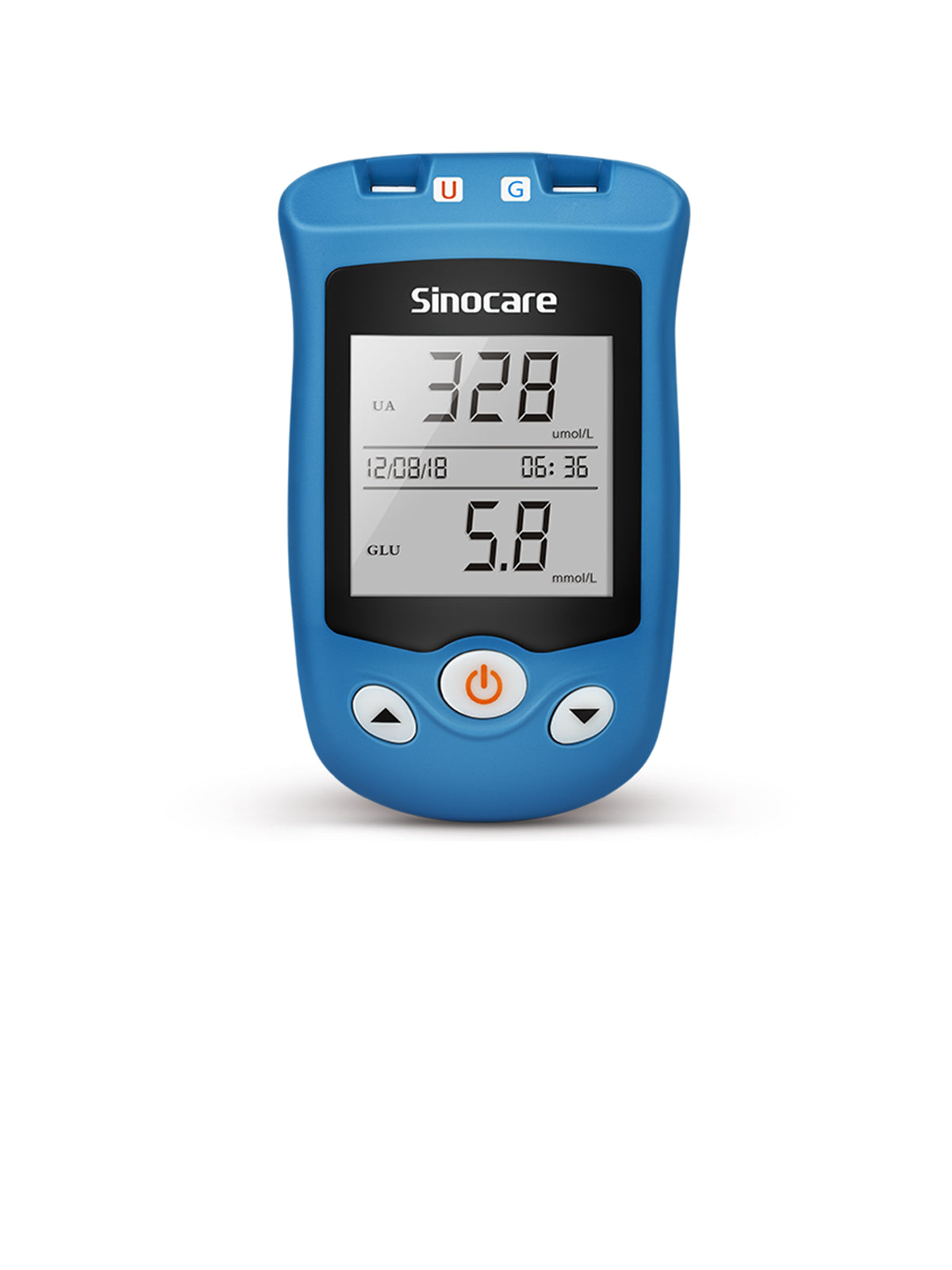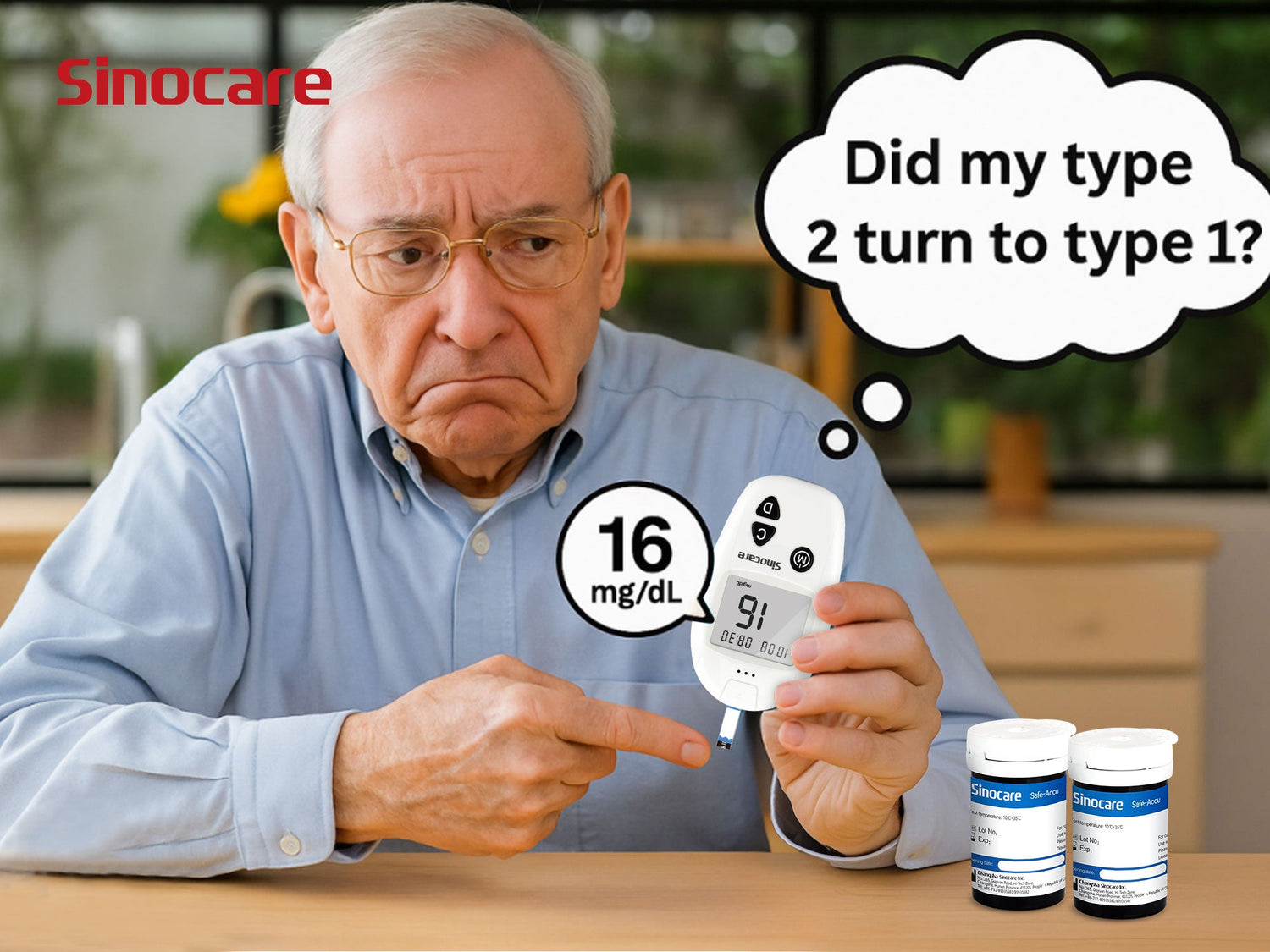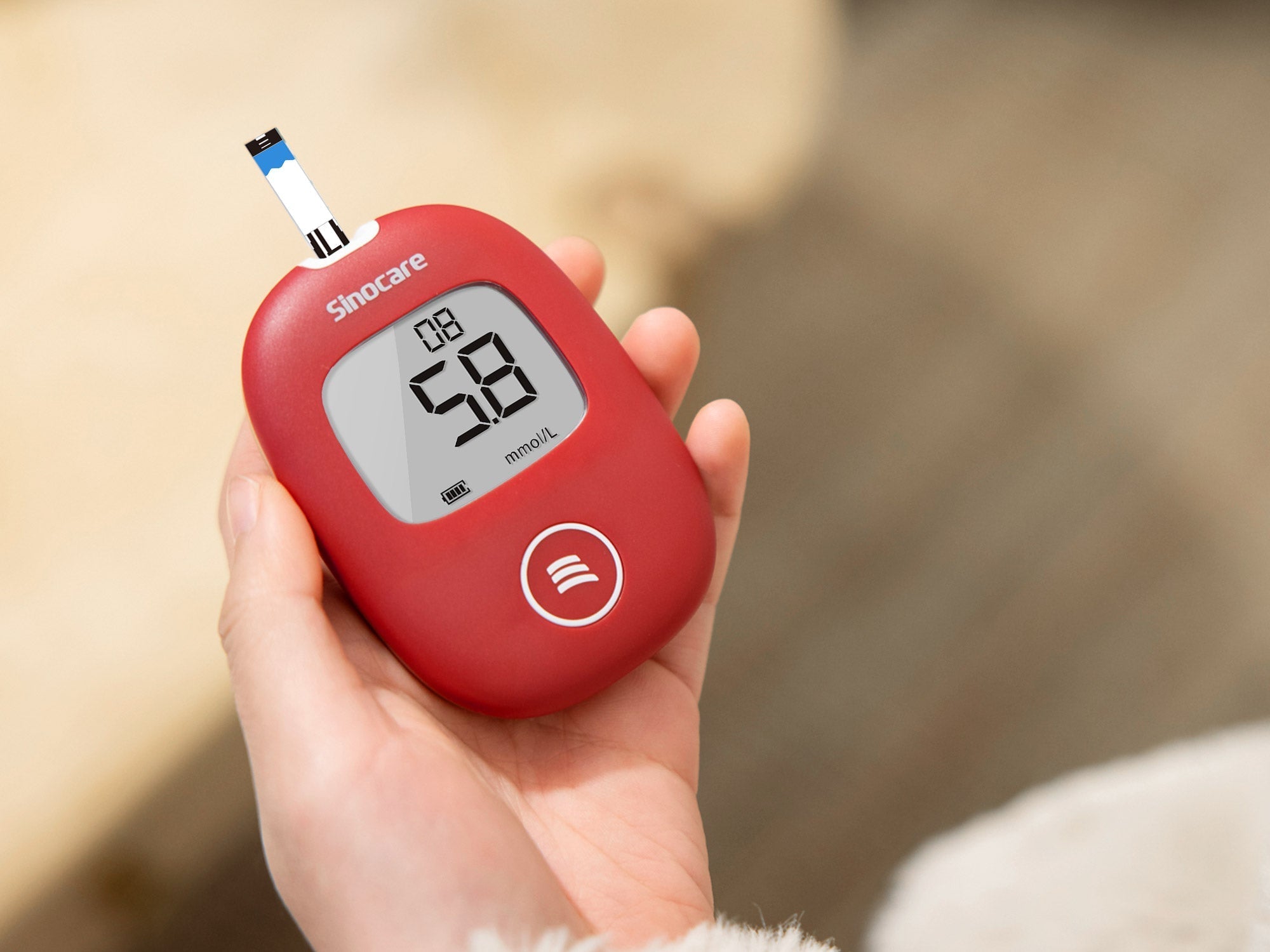Diabetes is a chronic (lifelong) condition with primarily two types. Once diagnosed with either type 1 or type 2, people need to manage it through proper diet and lifestyle changes besides medications.
Throughout this lifelong battle with the disease, many wonder if their form of diabetes can change into another. One common question they often ask is: "My doctor says I have type 2 diabetes, but now I need insulin. Did my diabetes turn into type 1?"
No, type 2 diabetes can’t turn into type 1 diabetes. That’s because both are distinct conditions with different causes. Let’s explain why.
Understanding the Two Main Types of Diabetes
Type 1 diabetes is an autoimmune condition in which our body's immune (defense) system gets a false signal that cells producing insulin in the pancreas are harmful and thus attacks and destroys them completely. The result? The body produces little to no insulin. People with Type 1 require daily insulin shots (or an insulin pump) to live [1].
Type 2 diabetes is a metabolic disorder. It is the most common form of diabetes: about 90% of diabetics have this. Usually develops gradually, it affects adults more than younger people. That’s why it’s also called adult-onset diabetes [2].
In Type 2, the pancreas still produces enough insulin but the body fails to use it properly due to a condition called insulin resistance. This resistance happens as obesity and physical inactivity impair how cells respond to insulin. The muscles, fat and liver cells don’t open up and use insulin as they typically should. Poor insulin use means less glucose entry from the bloodstream into cells. The result is high blood sugar levels. The pancreas initially compensates for this by making more insulin, but it also gets overwhelmed over time. When that happens, type 2 diabetes develops [2, 3].
To learn more, read how glucose enters the cell.

Can Type 2 Diabetes Turn into Type 1 Diabetes?
The clear-cut answer is NO. Type 2 diabetes can’t change into Type 1 diabetes or vice versa. As explained above, they are totally separate forms of diabetes with distinct causes.
So why do people get confused? There are a few reasons.
1. Inability to produce enough insulin
In people with type 2 diabetes, insulin-producing islet beta cells remain under constant pressure to make more insulin, especially when they don’t follow a diabetes-friendly diet and take medications as prescribed.
Over time, the pancreas can get overworked and the beta cells may lose their ability to secrete enough insulin for the body’s needs, even with medications. At that point, type 2 diabetes patients might need insulin shots, just like someone with type 1 [3, 4].
Needing insulin in type 2 diabetes is simply a sign of diabetes progression. The diagnosis is still a type 2, not type 1. The underlying cause (insulin resistance, not autoimmunity) also remains different. In short, the patient basically develops insulin-dependent type 2 diabetes [1, 4].
2. Misclassifying type 1 as type 2
In many cases, patients are initially told they have type 2 diabetes while actually having type 1. This is a misdiagnosis, and it often happens with adult-onset type 1 diabetes. Doctors may see no immediate need for insulin injections after performing initial tests. So, assuming the patient likely has type 2 diabetes, they may prescribe diet changes and antidiabetic medications [1].
For a while, those meds may work, but it will soon become clear that the patient has the other type. That’s because the blood sugar levels will remain high despite doing everything right. The patient might think, “My type 2 turned into type 1,” but that’s not the case. The person actually had type 1 diabetes all along (just a slower-progressing form). Such cases are not rare. Research suggests that about 50% of adults who develop type 1 diabetes are initially misclassified as having type 2 [1, 5].
3. Latent Autoimmune Diabetes in Adults (LADA)
LADA is a condition that shares features of both type 1 and type 2. It doesn’t manifest in the typical way we expect classic Type 1 to appear. In the early stage, patients with LADA might not need insulin and might even be managed for a time with diet or oral meds. But the immune system of these patients does attack the insulin-producing beta cells, albeit more slowly. That’s why this condition is also called type 1.5 diabetes [6].
Patients with LADA are often adults, usually in their 30s, 40s, or 50s. They don’t always need insulin right away. In fact, like a type 2 patient, they might even respond well to dietary changes and oral meds at first. Because of this, doctors might misclassify it as type 2 diabetes. But as the autoimmune attack continues, the person’s pancreas will lose its ability to produce insulin. Within a few years, these patients will need insulin shots like those with type 1.
LADA is not rare. Studies have found that around 5–10% of people thought to have type 2 diabetes may actually have LADA. To avoid such misclassification, two tests are often performed: GAD antibodies test and C-peptide test [6, 7].
Managing Diabetes When Things Change
Diabetes requires lifelong management. Your condition won’t remain the same and will need regular adjustments to keep blood sugar stable. This may include lifestyle changes as well as medication modification. Here’s how to stay on top of diabetes management when things change:
Monitoring and Reassessment
There is no alternative to regular monitoring for good diabetes management. Besides daily home blood glucose monitoring, people with diabetes should routinely check HbA1c levels, which reflect average blood sugar over ~3 months. This can help you and your healthcare provider detect signs of diabetes progression early [8].
Your doctor may reassess and possibly run further tests, such as the C-peptide test, to determine how much insulin your body is actually making. In fact, during these routine check-ups, your doctor might say, “We need to add a new medication,” or “I’m prescribing insulin.”
Regular blood glucose monitoring plays a key role in detecting changes early. Using a reliable device like a Sinocare blood glucose meter can make daily checks easier and more accurate. With models like Safe AQ Smart and Safe Accu, you can get your blood sugar results in just a few seconds.
Adjusting Treatment Plans
Changes in the treatment plan are a normal part of managing diabetes. If the current treatment plan fails to meet the target blood sugar levels, you may need some adjustments. Your disease may have progressed, or you may have a new diagnosis, like actually having LADA all along.
For people with Type 2 diabetes, a typical journey might go like this: diet and exercise alone at first, then add an oral medication (like metformin), then maybe add a second medication if needed. If blood sugar targets still aren’t met, the doctor may recommend starting insulin therapy. This step can be scary for some, but it’s completely okay (and common). It’s just that their body’s needs have changed [8, 9].
Frequently Asked Questions (FAQs)
Can a type 2 diabetic suddenly need insulin?
Yes, but the move to insulin in type 2 is often gradual rather than overnight. If someone with type 2 suddenly ends up needing insulin, it’s often due to a misdiagnosis. The normal progression of type 2 is typically slow.
What is double diabetes?
It's an informal term often used when someone shows features of both type 1 and type 2 diabetes at the same time. This typically happens more with those with type 1 diabetes who, over time, become insulin resistant (a hallmark of type 2).
Can adults get Type 1 diabetes?
Yes, adults can develop Type 1 diabetes. When this happens, it's often referred to as adult-onset Type 1 diabetes or LADA.
Final Thoughts
Type 2 diabetes never literally turns into type 1. Needing insulin in type 2 doesn’t mean you all of a sudden have type 1 diabetes. Yes, it’s confusing to find yourself needing insulin after years of taking antidiabetic medication. That’s totally understandable.
The key is to remember that whatever the type, you can always lead a healthy, active life with proper management. Diabetes is a lifelong condition, so things won’t remain the same all the time. If you had a misdiagnosis or your doctor changes your treatment plan, it’s done to ensure you’re getting the most appropriate care, not because your condition worsened.
References
1. DiMeglio, L. A., Evans-Molina, C., & Oram, R. A. (2018). Type 1 diabetes. The Lancet, 391(10138), 2449-2462.
2. Bullard, K. M. (2018). Prevalence of diagnosed diabetes in adults by diabetes type—United States, 2016. MMWR. Morbidity and mortality weekly report, 67.
3. Goyal, R., Singhal, M., & Jialal, I. (2023). Type 2 diabetes. StatPearls [Internet].
4. Nkonge, K. M., Nkonge, D. K., & Nkonge, T. N. (2023). Insulin therapy for the management of diabetes mellitus: a narrative review of innovative treatment strategies. Diabetes Therapy, 14(11), 1801-1831.
5. Hope, S. V., Wienand-Barnett, S., Shepherd, M., King, S. M., Fox, C., Khunti, K., ... & Shields, B. M. (2016). Practical Classification Guidelines for Diabetes in patients treated with insulin: a cross-sectional study of the accuracy of diabetes diagnosis. British Journal of General Practice, 66(646), e315-e322.
6. Hu, J., Zhang, R., Zou, H., Xie, L., Zhou, Z., & Xiao, Y. (2022). Latent autoimmune diabetes in adults (LADA): from immunopathogenesis to immunotherapy. Frontiers in endocrinology, 13, 917169.
7. Pieralice, S., & Pozzilli, P. (2018). Latent autoimmune diabetes in adults: a review on clinical implications and management. Diabetes & metabolism journal, 42(6), 451.
8. Mathew, T. K., Zubair, M., & Tadi, P. (2023). Blood Glucose Monitoring. In StatPearls [Internet]. StatPearls Publishing.
9. Aloke, C., Egwu, C. O., Aja, P. M., Obasi, N. A., Chukwu, J., Akumadu, B. O., ... & Achilonu, I. (2022). Current advances in the management of diabetes mellitus. Biomedicines, 10(10), 2436.






Leave a comment
All comments are moderated before being published.
This site is protected by hCaptcha and the hCaptcha Privacy Policy and Terms of Service apply.